
Hyundai Ioniq 5 Road Test | THIS Is The Complete Picture For Indian...
- May 6, 2023
- Views : 4524


There’s a fine line between insanity and genius. For the most part, the Ioniq 5 walks that tight rope confidently. I can now say this with a little more assurance after having spent a better part of two days inside the cabin myself, driving it around (and also to death). Here’s what we learnt:
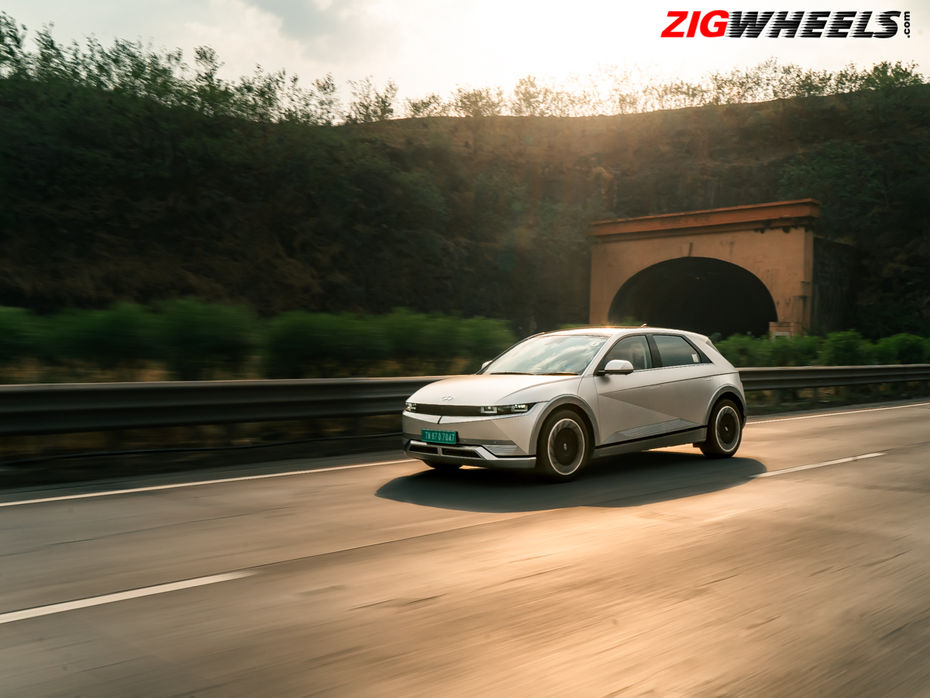
The Ioniq 5’s suspension tune seems a little confused — almost as if it cannot pick a side between being sporty/stiff and comfy/soft. It sits in a weird gray zone. On perfect roads, the controlled body movement and the quiet cabin come together beautifully to give you a relaxing experience. It feels like a speedboat on calm waters, slicing through the scenery at peace and the occupants at ease. Much like the speedboat, once the Ioniq 5 is done dealing with minor bumps/undulations on the highway, it takes a second longer than ideal to settle back into a smooth ride.
Introduce some really broken surfaces, and you’d have to prepare for some side to side swaying. Most of this is presumably down to the vehicle’s extra heavy battery pack located under the floor. Add the gigantic 20-inch alloy wheels to the mix, and you will have to be careful. For most cars, we’d simply suggest you speed up on surfaces like these. With the Ioniq 5, you are better off taking things slow.
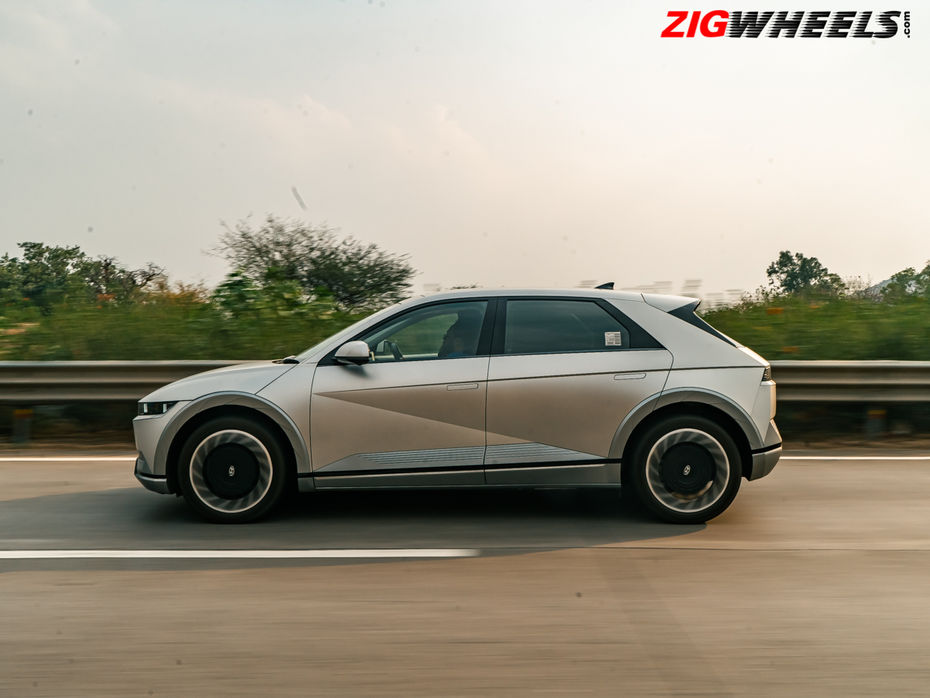
Hyundai’s claim of the Ioniq 5 being an SUV seems a little far fetched at first. A majority in the office also tend to agree that it looks like a 3XL-sized hatchback. That’s right until you park it next to anything.
Whether it’s the retro-futuristic design elements, the matte paint that cuts out reflections or the general shape of the car — you really need a reference point at all times to understand this car is a Tucson/Compass-sized vehicle. The only thing it lacks for that outright SUV feel is height.
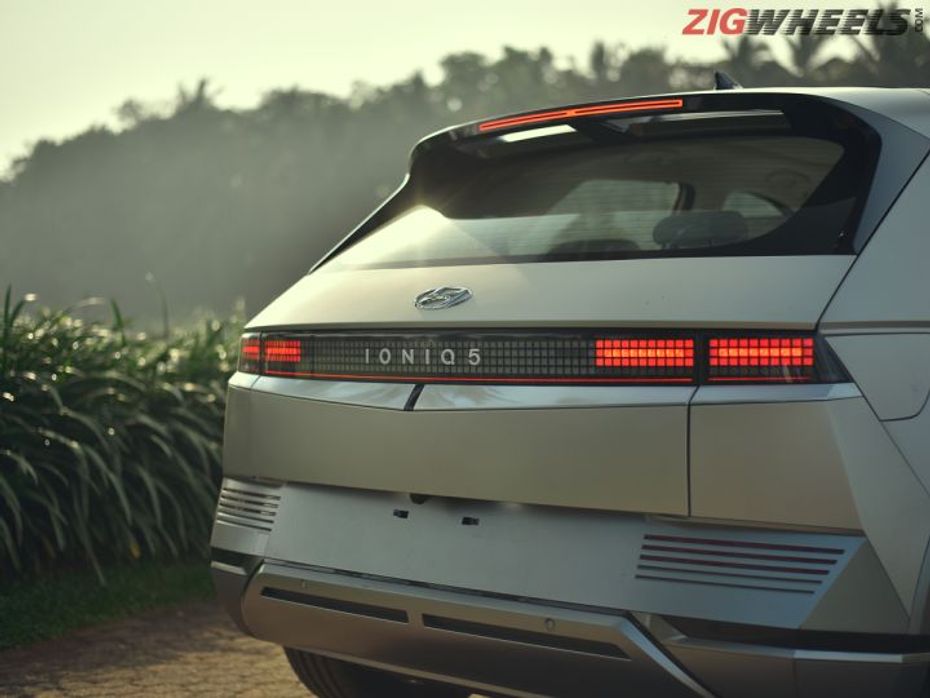
the automobile community
Irrespective of what you choose to call it, the number of heads it turns is mind-boggling. It looks like it belongs on a movie set. And if you like attention, you will like the Ioniq 5.
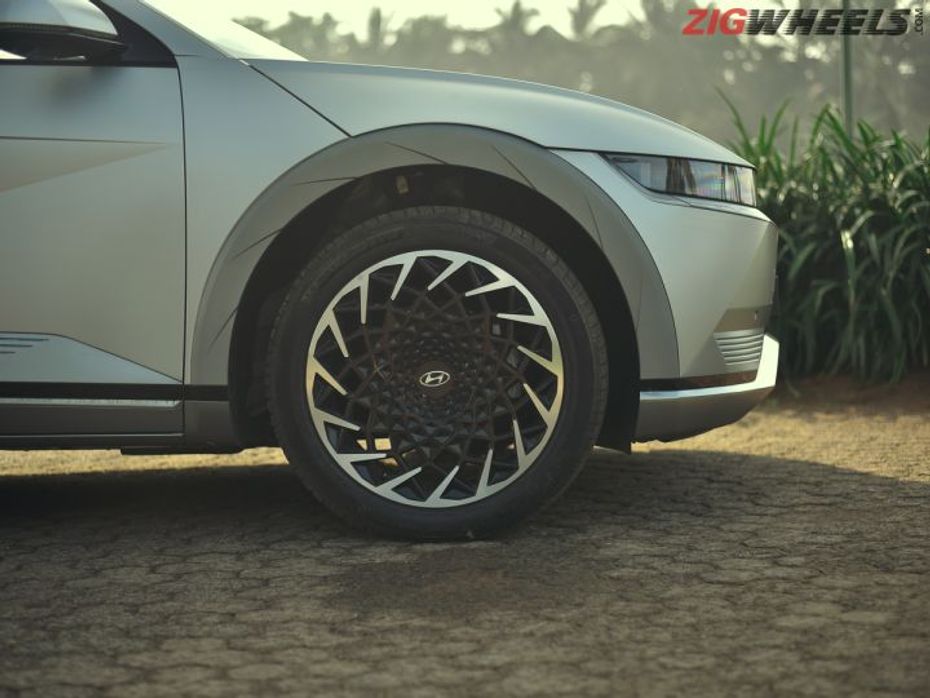
For a vehicle its size (and weight), the Ioniq 5 is hilariously quick. Hyundai claims a 0-100kmph time of 7.6 seconds. With our VBox strapped on, we managed to hit the ton in 7.68 seconds. It will do questionable speeds (electronically limited to 188) a little too easily and also stay there comfortably all day long.
If the same kind of performance was coupled with a revving motor and an exhaust that popped, banged and crackled, you’d think of yourself as a driving god. It’s this sensory depletion that electric vehicles bring with them that fools you into thinking the Ioniq 5 is a lot more docile than it actually is.
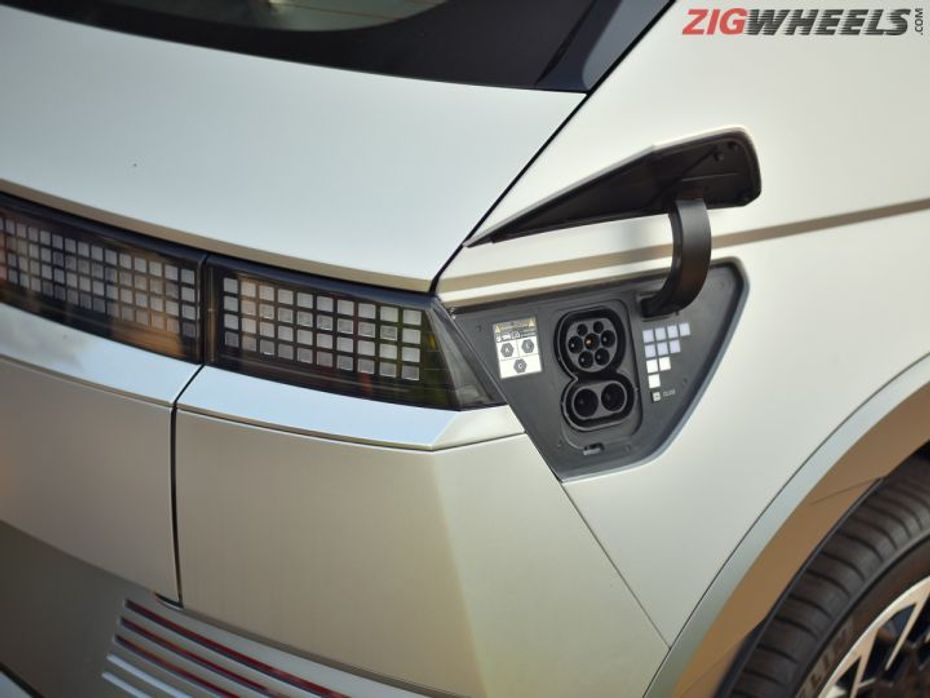
Charging the Ioniq 5 using the standard 3.3kW charger is painfully slow. From 0%, the car showed an estimated time of 42 hours for a full charge. That seemed likely too, considering 12 hours later, the battery was at around 36%. This isn’t necessarily a bad thing considering this charge is enough to give you ~140km of range. The slow charge time is heavily a function of the large 72.6kWh battery capacity.
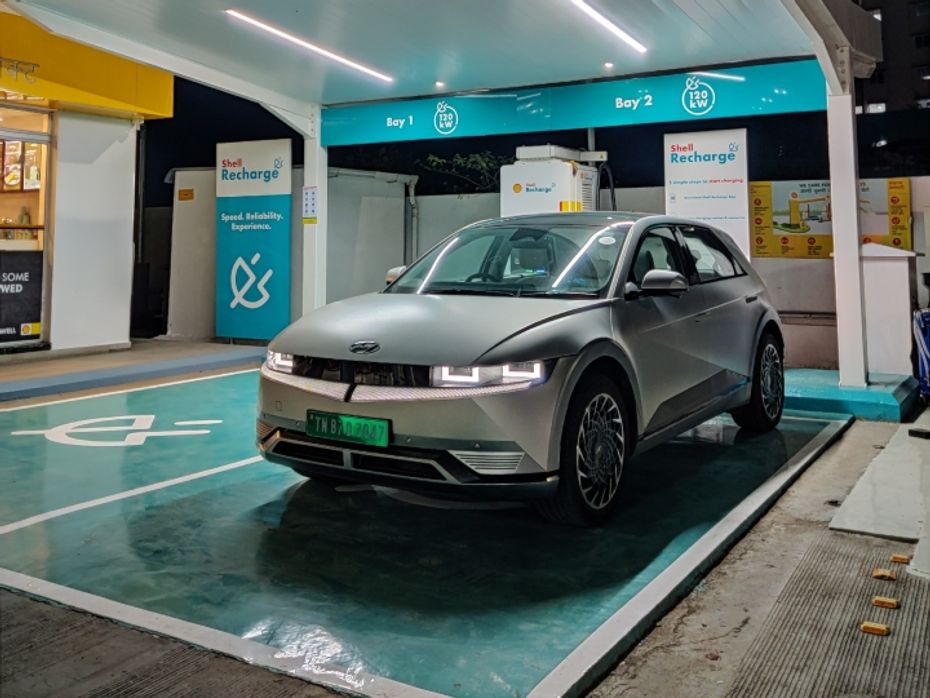
We also had the chance to sample a 120kW public charger. 25-95% took a little less than an hour. We had to abort charging at 95% due to a power cut, but there’s an interesting pattern in how the Ioniq 5 charges up:
|
Charging percent |
Time |
|
25 to 30 per cent |
2 mins |
|
30 to 40 per cent |
4 mins |
|
40 to 50 per cent |
3 mins |
|
50 to 60 per cent |
4 mins |
|
60 to 70 per cent |
5 mins |
|
70 to 80 per cent |
6 mins |
|
80 to 90 per cent |
19 mins |
|
90 to 95 per cent |
15 mins |
Notice how the Ioniq 5 takes approximately 4-5 minutes for every additional 10% of charge, up to 80%. Post this, it takes nearly four times as long to add the same amount of charge. This is because charging speed drops from 120kW to 10-20kW. At this point, the Ioniq 5’s battery management system focuses on ensuring an even charge across all cells and managing heat caused due to rapid charging (as is the case with most electric vehicles) .
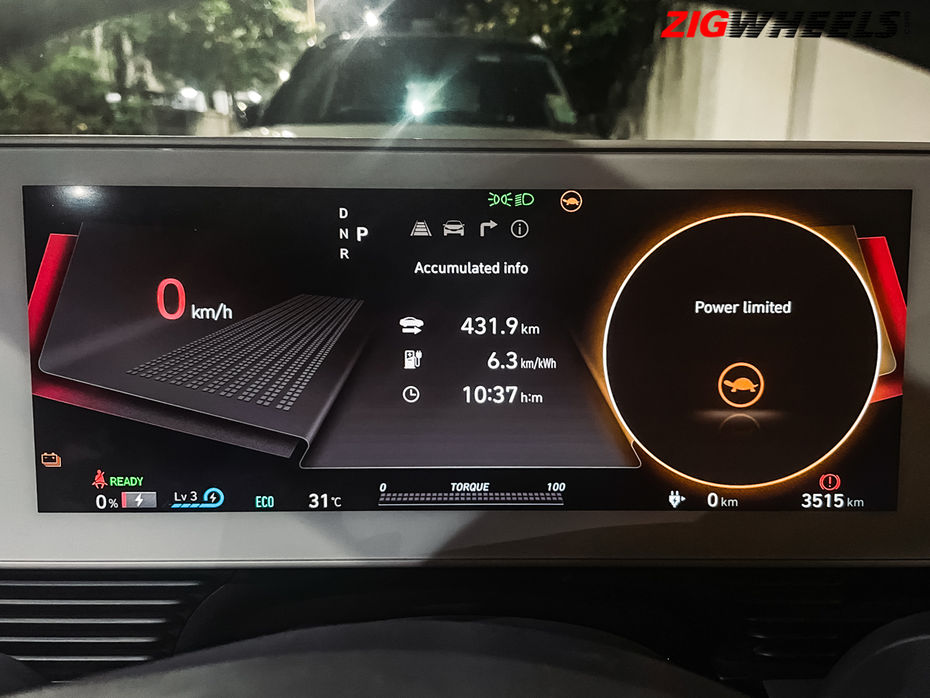
In our latest episode of Drive2Death, we tasked ourselves with running the Hyundai Ioniq 5 from 100 to 0%. The route wasn’t easy on the EV either, for it had to tackle the inclines of Lavasa, Amby Valley, the drive up from Mumbai to Lonavala and the old Mumbai-Pune highway. It clocked kilometres in the most diverse traffic conditions possible — from a light morning traffic, a smooth sailing expressway run and the evening rush hour as well. We weren’t particularly surprised when the Ioniq 5 managed to clock 431.9km at the end of the day.
Here are a few key things we learnt:
The DTE fluctuates significantly when the battery is close to full. It takes a while before the on-board computer calculates an accurate DTE. We lost ~20km of displayed range just by switching off the Ioniq 5 and turning it back on again.
A better indicator of range at hand is the battery percentage. We averaged ~4.3km/per cent of battery. 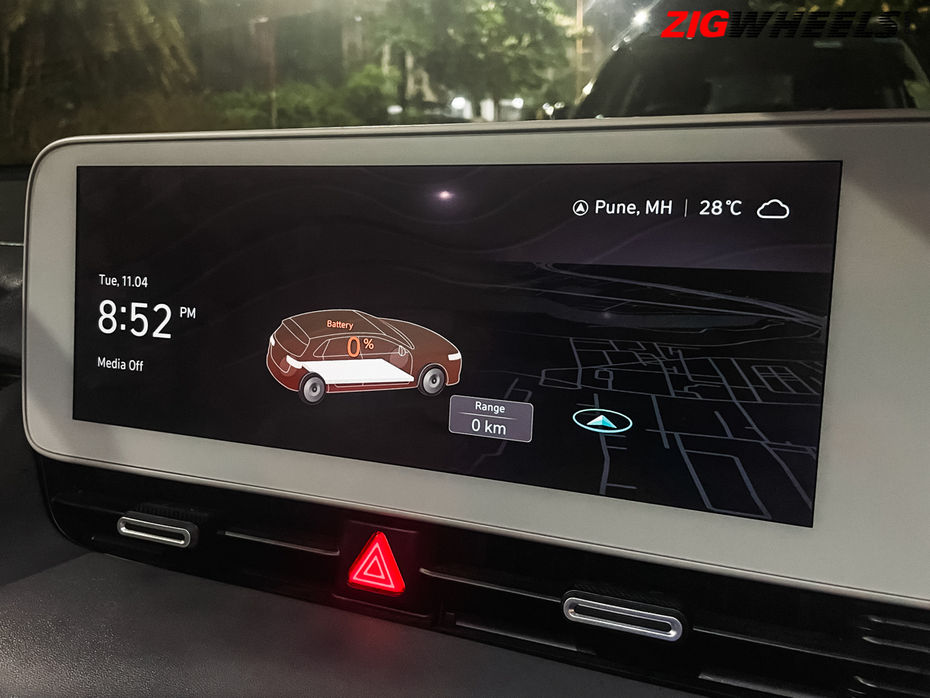
When the battery drops down to 0% — you can still have 2km of range left to find a charger, subject to the driving conditions and how well you manage regenerative braking.
There’s no loss in performance right up to 5%. Even then, you can very comfortably drive around in the city, hit triple digit speeds on the highway and tackle flyovers. Only at super steep inclines will you realize that the car’s performance is curtailed.
At 0% the Ioniq 5 enters limp home mode. Again, still perfectly drivable within city limits here.
Air-conditioning has a massive impact on the range of the Ioniq 5. Setting temperature to lowest and the fan speed to maximum takes a full 100km out of the car’s estimated range. During our battery draining test, we had the AC at 23 degrees and fan speed at 2 throughout. Surprisingly, seat ventilation has no effect on the car’s DTE.
The i-Pedal, which is the single pedal mode, is calibrated well for city use. It takes next to no time to get used to. Let go off the accelerator in time and the car rolls to a halt on its own, owing to brake energy regen.
Brake energy regen set to Level 2 feels the most ‘natural’. Resistance is actively felt in Level 3. Level 0 and 1 are barely noticeable. You can also tug and hold the left paddle to have the car come to a dead stop.
The ADAS suite isn’t as India-friendly as the Verna’s. For our conditions, the adaptive cruise control (even at the closest setting) simply leaves way too much space between itself and the car in front. Enough for another car to squeeze in and trigger an emergency braking response. Second, lane keep assist doesn’t exactly keep the car centered — it positions it close to the left edge of the lane.
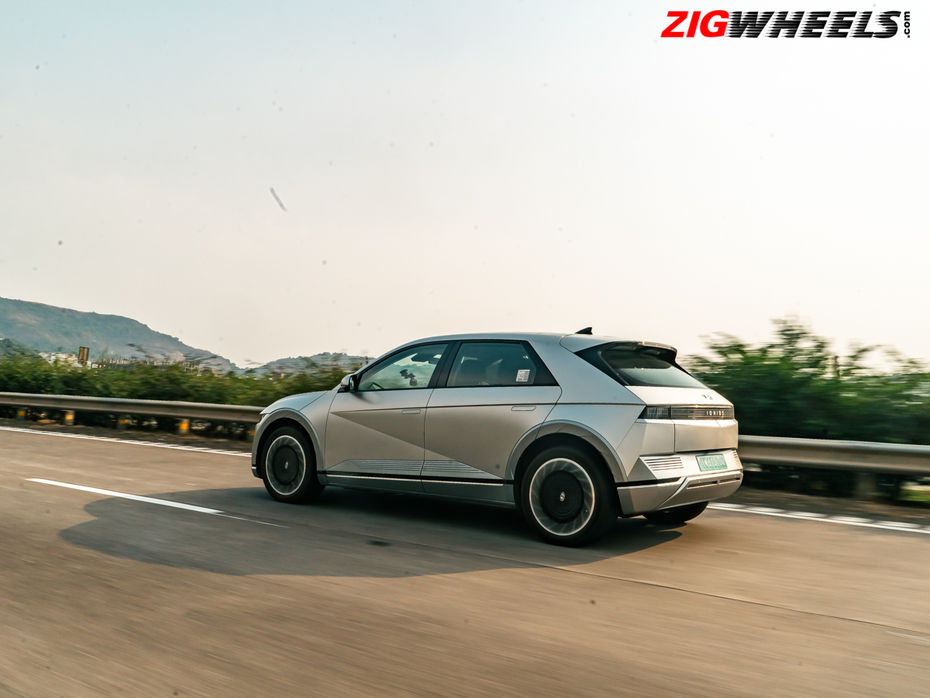
Also Read: Hyundai Ioniq 5: We Put This Futuristic Looking EV Through Its Paces
Would I still recommend the Ioniq 5? Well, yes. If your garage needs something luxurious and attention-grabbing whilst costing next to nothing to run, the Ioniq 5 is as good as it gets for Rs 50 lakh.
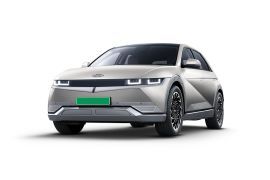

Hyundai Ioniq 5 Road Test | THIS Is The Complete Picture For Indian...

Mahindra XEV 9e Vs Hyundai Ioniq 5: We Compare Their Specifications...

Why An EV Should Be Your Next Car In India

How Hyundai Paved The Path For EVs In India!

List Of Carmakers Coming To Bharat Mobility Expo 2025

Your Hyundai Ioniq 5 Could Have A Battery Issue

Hyundai Ioniq 5 Gets A New Color Option For Both Exterior And Interior

Hyundai Ioniq 5 Gets A Mild Facelift, Bigger Battery, More Features...

Shah Rukh Khan Brings Home His First EV - Can You Guess What It Is?
 Kia EV6
Kia EV6
 BYD Seal
BYD Seal
 BYD Atto 3
BYD Atto 3
 BMW iX1
BMW iX1
 BYD eMAX 7
BYD eMAX 7
India's largest automotive community
 Here Is A List Of SUVs Coming To The Indian Market In 2025
Here Is A List Of SUVs Coming To The Indian Market In 2025
 Check Out The List Of The Top 5 SUVs Showcased At The Auto Expo 2025
Check Out The List Of The Top 5 SUVs Showcased At The Auto Expo 2025
 Auto Expo 2025: Toyota Hilux Black Edition Explained In 10 Images
Auto Expo 2025: Toyota Hilux Black Edition Explained In 10 Images
 India’s Most Affordable Car, The Vayve Eva Is Priced From Rs 3.25 Lakh! Here Is A Look At All Of Its Variants!
India’s Most Affordable Car, The Vayve Eva Is Priced From Rs 3.25 Lakh! Here Is A Look At All Of Its Variants!
 Hyundai Creta
Rs. 11.10 Lakh
Hyundai Creta
Rs. 11.10 Lakh
 Hyundai Venue
Rs. 7.94 Lakh
Hyundai Venue
Rs. 7.94 Lakh
 Hyundai Verna
Rs. 11.07 Lakh
Hyundai Verna
Rs. 11.07 Lakh
 Hyundai i20
Rs. 7.04 Lakh
Hyundai i20
Rs. 7.04 Lakh
 Hyundai Creta Electric
Rs. 17.99 Lakh
Hyundai Creta Electric
Rs. 17.99 Lakh
 Mahindra BE 6
Rs. 18.90 Lakh
Mahindra BE 6
Rs. 18.90 Lakh
 Hyundai Creta Electric
Rs. 17.99 Lakh
Hyundai Creta Electric
Rs. 17.99 Lakh
 Mahindra XEV 9e
Rs. 21.90 Lakh
Mahindra XEV 9e
Rs. 21.90 Lakh
 MG Windsor EV
Rs. 13.99 Lakh
MG Windsor EV
Rs. 13.99 Lakh
 Tata Curvv EV
Rs. 17.49 Lakh
Tata Curvv EV
Rs. 17.49 Lakh